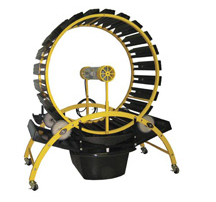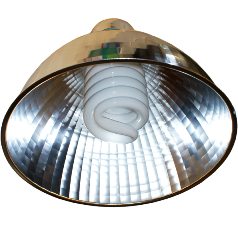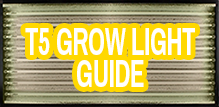Fluorescent light like any other light source illuminates in all directions from the actual bulbs head and that means that the shape and form of this light is directly correlated to the spread and intensity of light you will get and a properly designed lamp can have the spread of a floodlight or even a spotlight and that means that the intensity will be much higher and the coverage area will be smaller.
When choosing your fluorescent light for growing plants you need to consider what area you would need to cover with your light source and find how much lumens does your particular plant need for optimum growing so that you can calculate how much light bulbs you need and how powerful they need to be. Usually newcomers think about the power, the lumen output and calculate how much light they need, but usually they don’t think about the light spread and how this affects your grow lights performance and about all the ways that you could increase or decrease the spread and how this affects your lights intensity and power output towards those growing plants.
 When talking about T5 lights we know that these are straight fluorescent tubes that direct light 360 degrees on all the sides and for growing that is not that efficient because plants usually grow beneath your light if you are not using something like a hydroponic 360 degree garden. And this poses a big problem as the light is created in all directions but the plants only grow beneath the light so the light that is created and is not shining directly on them is almost entirely lost because while it gets reflected multiple times and somehow gets to those green leafs it is not strong enough anymore to properly allow your plants to grow. For T5 light there is only one way to fight this and it is to use a reflector that will concentrate all the light from this bulb in one direction and depending on that reflectors efficiency you can get somewhere close to that original lumen output directed on your plants but some intensity will be lost as again the light that is reflected will be bent and will lose some some energy in the process. Of course you could also use these T5 tubes at the plant canopy level between the plants but then you can only use single tube fixtures as more lamp fixture usually come with pre-made reflectors and would be hard to place at that growing level. This Technique is called supplemental lighting and it is widely used in high-energy requirement plant use but you still need a main light source that will shine from the above to create that stretching effect for your plants as they usually stretch to the light to get more lumens and grow faster!
When talking about T5 lights we know that these are straight fluorescent tubes that direct light 360 degrees on all the sides and for growing that is not that efficient because plants usually grow beneath your light if you are not using something like a hydroponic 360 degree garden. And this poses a big problem as the light is created in all directions but the plants only grow beneath the light so the light that is created and is not shining directly on them is almost entirely lost because while it gets reflected multiple times and somehow gets to those green leafs it is not strong enough anymore to properly allow your plants to grow. For T5 light there is only one way to fight this and it is to use a reflector that will concentrate all the light from this bulb in one direction and depending on that reflectors efficiency you can get somewhere close to that original lumen output directed on your plants but some intensity will be lost as again the light that is reflected will be bent and will lose some some energy in the process. Of course you could also use these T5 tubes at the plant canopy level between the plants but then you can only use single tube fixtures as more lamp fixture usually come with pre-made reflectors and would be hard to place at that growing level. This Technique is called supplemental lighting and it is widely used in high-energy requirement plant use but you still need a main light source that will shine from the above to create that stretching effect for your plants as they usually stretch to the light to get more lumens and grow faster!
 If we think about other fluorescent light types like CFL then we can see that they have the same problem and without a reflector there are severe light losses but CFL lights also have the problem that their bulb head is usually curved and is pretty long so those small reflectors cannot reflect all the light from those curved fluorescent tubes as they just like T5 and T8 lights create light in a 360 degree angle but because those tubes are curved that means the light is created in some odd angles and is shined in all directions. Of course there are also some hi-tech reflectors that work like the ones for HPS light and you can also use these cfl light just like supplemental lighting hanging them in the plant canopy level to get more light penetration, strength and increase the efficiency.
If we think about other fluorescent light types like CFL then we can see that they have the same problem and without a reflector there are severe light losses but CFL lights also have the problem that their bulb head is usually curved and is pretty long so those small reflectors cannot reflect all the light from those curved fluorescent tubes as they just like T5 and T8 lights create light in a 360 degree angle but because those tubes are curved that means the light is created in some odd angles and is shined in all directions. Of course there are also some hi-tech reflectors that work like the ones for HPS light and you can also use these cfl light just like supplemental lighting hanging them in the plant canopy level to get more light penetration, strength and increase the efficiency.
But what about other light sources? For example LED diode powered lights are very different from fluorescent lights as they usually have narrow angle beams and they are great for spotlight but have to be altered with a beam-bending lens to create floodlight so this light source could be a great way to grow your plants but at the moment LED lights are still too expensive to get a great value from them!
